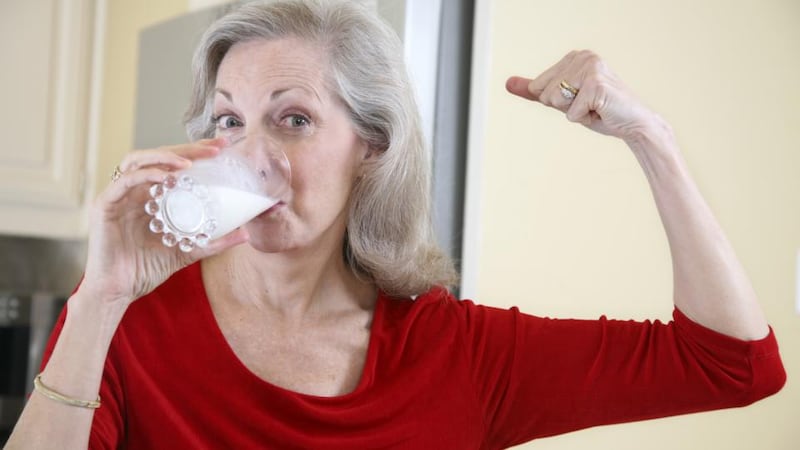Most people are well aware of the risks of the bone-thinning disease, osteoporosis, but few have ever heard of sarcopenia, a related and equally debilitating condition that is emerging as a major health concern globally.
While osteoporosis affects the bones, reducing bone mass and leading to risk of fracture, sarcopenia is the loss of muscle mass and strength that occurs with ageing.
We begin to lose muscle mass and strength from our 30s. Those who are physically inactive can lose as much as 3-8 per cent of muscle mass per decade after the age of 30 and 1-2 per cent a year after the age of 50. Even active people will still experience some muscle loss.

A very slow progressive disease, sarcopenia can eventually rob older people of the ability to perform even the most basic tasks as well as increasing the risk of injury from sudden falls and other accidents.
Poor nutrition
While physical inactivity is well established as playing a role in the progression of the disease, poor nutrition is also getting attention as a causative factor. Researchers at the University of Limerick are investigating combined exercise and nutrition programmes to offset age-related muscle mass loss. Some of the nutrition principles being tested have a basis in established sports nutrition practices.
Catherine Norton, a dietitian at UL and an accredited sports nutritionist, is a member of the multidisciplinary research team. She points out that the Irish diet does not lend itself to the healthy retention of muscle mass.
“Older Irish people tend to eat quite a small amount of protein at breakfast, a little more for lunch and a large amount at dinner. We know from sports nutrition, that if you distribute your protein intake throughout the day, it creates an environment much more likely to facilitate muscle mass gains. If you ensure adequate nutrition around a stimulus such as resistance or strength training, you are more likely to arrest the decline in muscle mass observed in ageing, and in some cases even increase lean tissue mass.”
The research team in UL is looking at the use of community- or home-based progressive exercise programmes that use the person’s own body as resistance and involve 30-40 minutes of exercises each day.
“As people get older, they find it more difficult to keep their weight within a healthy range.
"The way dieticians or healthcare professionals traditionally measured weight loss was with a weighing scales and to lose weight you were advised to reduce your calorie intake and increase exercise. In the past 10 years, there have been a lot of awareness campaigns encouraging people to measure their Body Mass Index (BMI), but while your BMI can indicate whether you are outside the recommended weight for your height, it does not give any indication of your body composition or what percentage of your body is made up of fat, lean tissue or water," Norton explains.
Norton is addressing today's Irish Nutrition and Dietetic Institute (INDI) symposium, run in association with the National Dairy Council (NDC) on Body Weight and Body Composition in the Older Person . The symposium is Body Weight and Body Composition Throughout the Life Cycle .
The research team at UL is using Dexa scans to provide more comprehensive information on body composition. This will allow for the development of tailored, individualised dietary approaches to managing weight and health.
Elite athletes
Much of the work Norton does in private practice is with elite athletes who use diet and exercise to increase their lean tissue mass and she is translating this approach to the general population in her research.
“One client of mine lost 14kgs through the traditional route of reducing overall calorie intake and exercising. I analysed his body composition before and after his weight loss and found that eight of the kilos he lost was fat which was good, but six kilos was muscle which was not good.”
Another client was a GAA player who wanted to get into shape pre-season. As well as advising him to cut down on high-fat food and sugar, Norton ensured he distributed high quality sources of protein evenly throughout the day and optimised nutrition around the time of training.
If his progress was assessed with a weighing scales alone, his total weight loss would been 1.8kg. Assessment of the changes in body composition using a Dexa scan showed that he had actually lost 5kg of fat and gained 4kg of lean tissue, increasing his overall strength and performance.
Norton is confident that using the same sports nutrition principles among older adults in the ongoing research at UL will produce similar results.
In her own clinical work Norton applied these principles to a client who wanted weight management advice. The intervention resulted in a total weight loss of 9kg – 8kg of fat and only one of lean tissue mass.
“The timing and quality of the protein that people eat is vital. Not all proteins are created equally and you want the best quality protein you can get. Dairy products are a good source of protein. You could drink milk instead of water or have yoghurt instead of just tea and toast for breakfast or add an egg.
“Lean meats are also a good source but the problem is that a lot of meat is fried in batter or served with rich creamy sauces and you need the right balance for weight management. Beans, nuts, lentils and seeds are also a great source of protein.”
As Norton says, making some very small changes to your diet and lifestyle from your 30s on could have a huge impact on your health and quality of life as you grow older.
More nutrients
Dr Catherine Logan, nutrition manager with the Irish Dairy Council, points out that people always associate milk with calcium and indeed two-fifths of the calcium consumed by Irish adults comes from milk, cheese and yoghurts.
“However, dairy has a lot more nutrients to offer than calcium. Dairy products like milk, cheese and yoghurt provide a very important matrix of nutrients, including high quality protein, that play an important part in body composition not just in the childhood years, but as we grow and age.
“There is some very positive research going on in the IDC and internationally about the benefits of the various components of dairy products.”



















